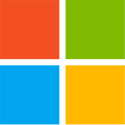Andreessen Horowitz (a16z), a leading American venture capital firm is in the process of setting up its first international office (outside of its California base of operations) in the United Kingdom. One of their mission statements reads: "(we) invest in seed to venture to late-stage technology companies, across bio + healthcare, consumer, crypto, enterprise, fintech, games, and companies building toward American dynamism." News sites have reported on Facebook and Twitter being notable "safe" prospects for a16z's team in the past. The company is hedging its bets on the UK government's fairly lax approach to crypto and blockchain regulation, following crackdowns on the cryptocurrency industry in the US. News outlets point to a notable case where the North American financial watchdog/regulator is suing the world's largest cryptocurrency exchange, Binance, due to activities "placing investors' assets at significant risk." The new Andreessen Horowitz London office is marked for a late 2023 opening—Chris Dixon the head of crypto investing at a16z has
written about his firm's decision to embrace a new market location: "While there is still work to be done, we believe that the UK is on the right path to becoming a leader in crypto regulation...The UK also has deep pools of talent, world-leading academic institutions, and a strong entrepreneurial culture."
He has also declared that the UK Prime Minister - Rishi Sunak - is very pleased about a16z setting up shop in the City of London (financial district). The UK leader's statement reads: "As we cement the UK's place as a science and tech superpower, we must embrace new innovations like Web3, powered by blockchain technology, which will enable start-ups to flourish here and grow the economy. That success is founded on having the right regulation and guardrails in place to protect consumers and foster innovation. While there's still work to do, I'm determined to unlock opportunities for this technology and turn the UK into the world's Web3 centre. That's why I am thrilled world-leading investor, Andreessen Horowitz, has decided to open their first international office in the UK - which is testament to our world-class universities and talent and our strong competitive business environment."




























































